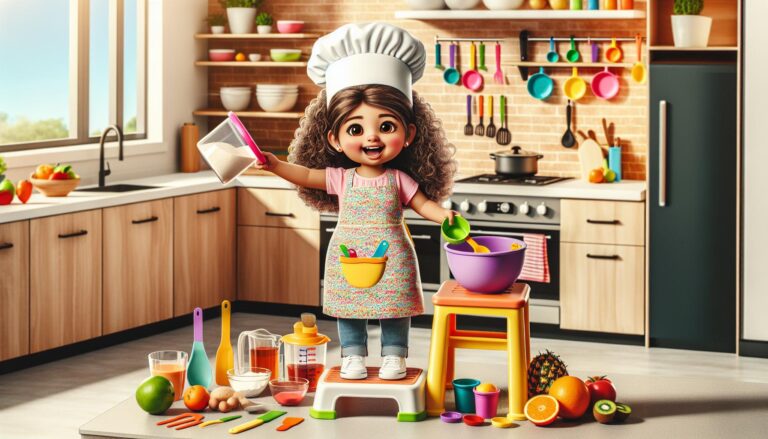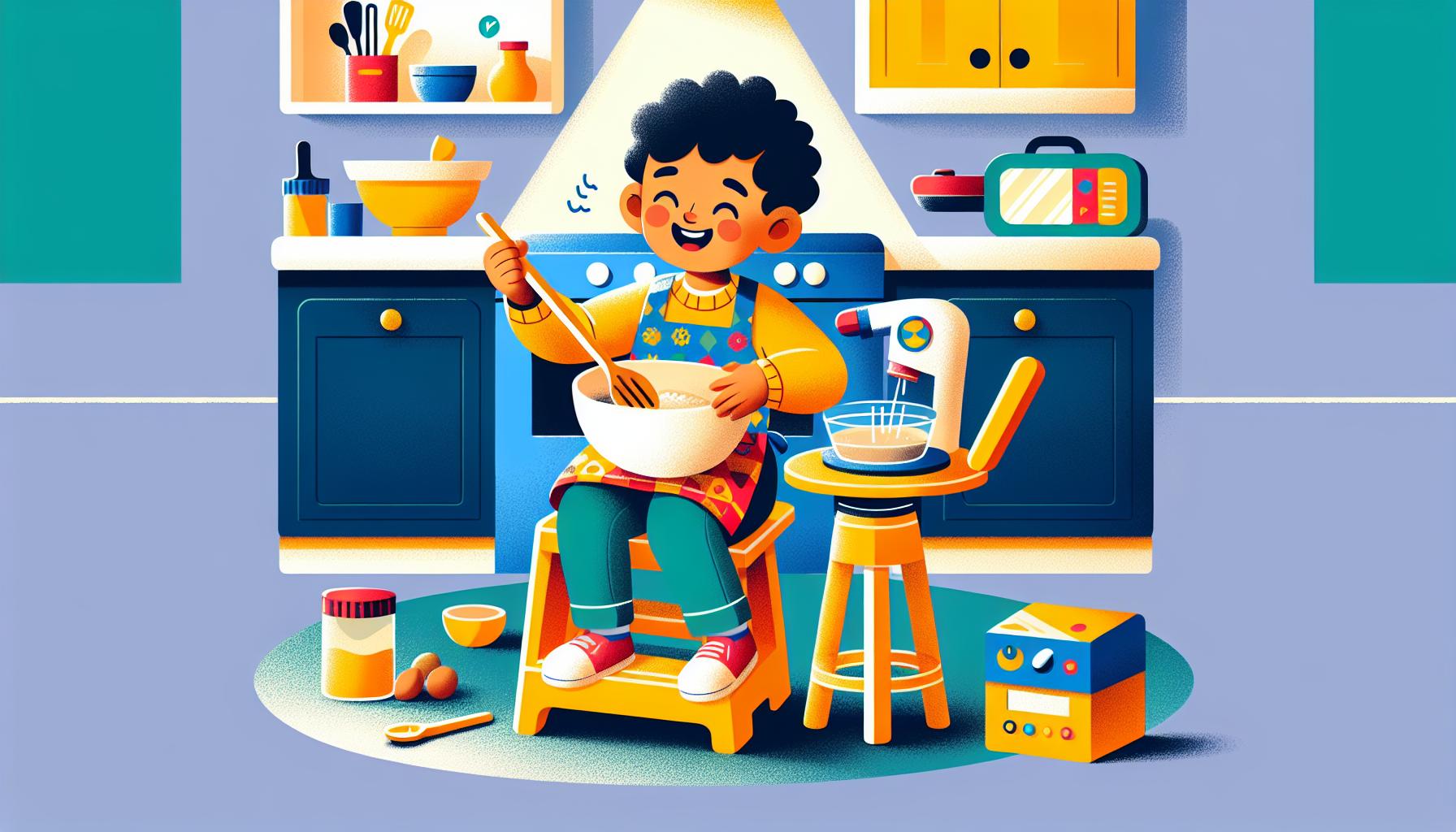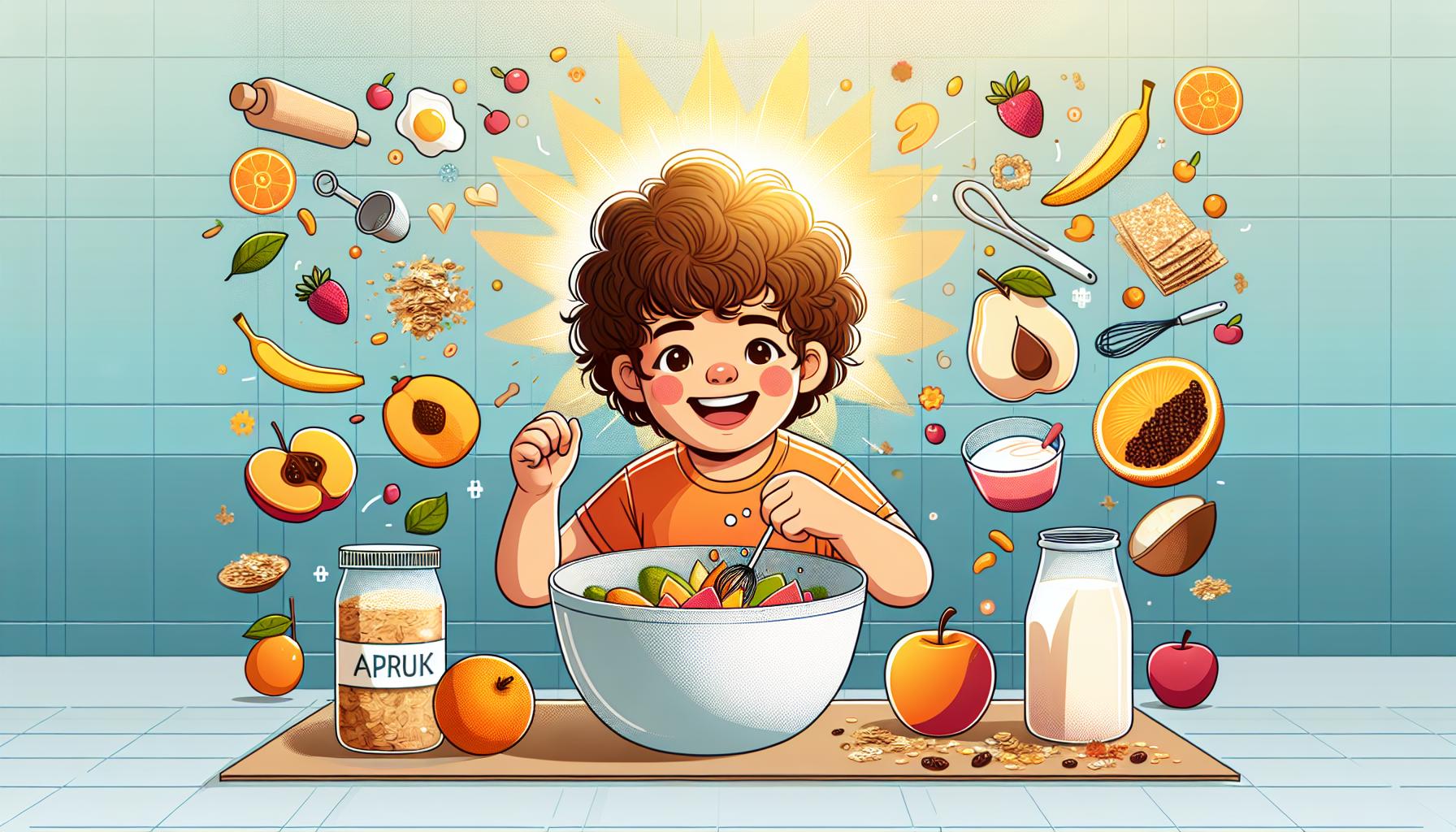
Getting kids into the kitchen can transform mealtime into an exciting learning adventure. We’ve discovered that cooking with preschoolers isn’t just about creating delicious food – it’s a fantastic way to develop essential life skills while having fun together.
Many parents wonder when’s the right time to start cooking with their little ones. The preschool years are perfect for introducing basic kitchen activities. From measuring ingredients to mixing batter, these hands-on experiences help children build confidence, practice math skills, and learn about healthy eating habits. What could be more rewarding than seeing your child’s face light up when they help prepare their first meal?
Key Takeaways
- Cooking with preschoolers builds essential life skills including math concepts, following instructions, and understanding nutrition while fostering confidence and independence
- Kitchen safety is paramount – use age-appropriate tools like plastic measuring cups, wooden spoons, and child-sized equipment while establishing clear safety rules and boundaries
- Start with simple no-bake recipes and basic measuring/mixing activities to help young children develop fundamental cooking skills without risk
- Create a dedicated kid-friendly workspace with stable step stools, non-slip mats, and easily accessible tools organized at child height
- Keep cooking sessions brief (10-15 minutes) and expect messes – focus on one task at a time while celebrating small achievements in the learning process
Benefits of Cooking With Preschoolers
Cooking with preschoolers creates valuable learning opportunities through hands-on activities in the kitchen. These experiences lay the foundation for important developmental milestones across multiple areas.
Building Life Skills
Cooking activities help preschoolers develop essential practical abilities that benefit them throughout life. Children learn basic kitchen safety rules like washing hands before handling food and understanding hot versus cold surfaces. They practice following step-by-step instructions while measuring ingredients strengthens their sequencing skills. Math concepts come alive as kids count eggs, measure cups of flour or divide portions. Through cooking, preschoolers gain confidence in:
- Making decisions about ingredients or recipe steps
- Working independently on age-appropriate tasks
- Problem-solving when recipes need adjustments
- Understanding nutrition by identifying healthy ingredients
- Practicing patience while waiting for food to cook
- Learning cooperation through shared kitchen responsibilities
Developing Fine Motor Skills
Kitchen activities provide natural opportunities for preschoolers to strengthen their hand muscles and coordination. Common cooking tasks that enhance motor development include:
- Stirring batters and mixing ingredients
- Pouring liquids into measuring cups
- Kneading and rolling dough
- Using cookie cutters to shape food
- Sprinkling toppings on dishes
- Tearing lettuce leaves for salads
- Squeezing citrus fruits
- Scooping ingredients with measuring spoons
These repetitive movements help children gain better control of small muscles in their hands and improve hand-eye coordination. Regular practice of these skills transfers to other activities like writing, drawing and getting dressed independently.
Kitchen Safety Guidelines for Young Children

Creating a safe cooking environment sets the foundation for enjoyable cooking experiences with preschoolers. These guidelines establish essential safety practices while maintaining an engaging atmosphere for young chefs.
Age-Appropriate Tools
Preschoolers thrive with tools designed for their small hands and developing motor skills. A child-sized apron protects clothes while plastic measuring cups provide safe handling options. Here’s a list of safe cooking tools for preschoolers:
- Plastic mixing bowls with non-slip bottoms
- Wooden spoons for stirring ingredients
- Silicone spatulas with short handles
- Rolling pins made from lightweight plastic
- Cookie cutters with rounded edges
- Plastic measuring spoons with large grips
- Bench scrapers with dull edges
Safety Rules and Boundaries
Clear safety rules create a structured environment where preschoolers learn responsibility. Teaching these rules through consistent practice helps children understand their importance:
- Wash hands before touching food ingredients
- Stay three steps away from hot surfaces
- Ask before touching any kitchen tools
- Keep fingers away from sharp objects
- Walk slowly with kitchen items
- Clean spills immediately using paper towels
- Listen to adult instructions the first time
Kitchen Safety Equipment:
| Item | Purpose |
|---|---|
| Step stool | Provides stable height for countertop access |
| Non-slip mats | Prevents slipping on floor surfaces |
| Fire extinguisher | Ready for emergency situations |
| First aid kit | Handles minor kitchen accidents |
| Timer | Monitors cooking duration |
- Demonstrating proper techniques
- Using verbal reminders consistently
- Creating visual safety signs
- Practicing safety routines regularly
- Rewarding safe behavior
- Setting clear workspace boundaries
- Establishing cleanup procedures
Best Starter Recipes for Preschoolers

Preschoolers gain confidence in the kitchen through simple recipes that focus on basic skills. Let’s explore age-appropriate recipes that create positive cooking experiences.
No-Bake Recipes
No-bake recipes offer safe starting points for young chefs to develop kitchen skills. Little ones mix ingredients in plastic bowls while learning food preparation basics without heat exposure. Popular no-bake options include:
- Roll fruit balls using dates oats graham crackers
- Layer yogurt parfaits with berries granola honey
- Press rice crispy treats with marshmallows cereal butter
- Stack sandwich cookies with cream cheese frosting
- Mix trail mix combinations with dried fruits nuts cereals
Simple Mixing and Measuring
Pre-measured ingredients help preschoolers practice fundamental kitchen techniques. Here’s how to introduce basic measuring skills:
- Pour pre-portioned dry ingredients from small containers
- Scoop ingredients using plastic measuring cups
- Count ingredients like chocolate chips or berries
- Mix batters with wooden spoons in lightweight bowls
- Sprinkle toppings on finished treats
| Tool | Purpose | Safety Feature |
|---|---|---|
| Plastic Measuring Cups | Dry ingredients | Unbreakable material |
| Wooden Spoons | Mixing | Splinter-free finish |
| Plastic Mixing Bowls | Combining ingredients | Light weight design |
| Step Stools | Height access | Non-slip surface |
| Child-Safe Knives | Soft food cutting | Rounded edges |
Creating a Kid-Friendly Kitchen Space
A well-organized kitchen space empowers preschoolers to participate safely in cooking activities. Creating dedicated areas for young chefs promotes independence while maintaining safety standards.
Setting Up Their Workspace
The ideal workspace for preschoolers includes a stable step stool positioned at a counter height that allows comfortable reaching. Here’s how to set up an effective cooking station:
- Place non-slip mats around the cooking area
- Position ingredients within arm’s reach
- Create designated spots for tools marked with pictures
- Set up a low drawer or shelf for child-accessible items
- Install hooks at child height for aprons
- Maintain a clean, clutter-free counter space
Essential Kitchen Tools
Child-friendly kitchen tools enable safe participation in cooking activities. These tools support development while minimizing risks:
Safety Equipment:
- Non-slip step stools with railings
- Child-sized oven mitts
- Plastic aprons with adjustable neck straps
- Plastic measuring cups
- Wooden spoons
- Silicone spatulas
- Plastic mixing bowls
- Child-safe knives with rounded tips
- Rolling pins sized for small hands
- Clear containers with easy-open lids
- Picture-labeled bins
- Color-coded measuring tools
- Magnetic timer with large numbers
- Lightweight mixing bowls
| Tool Category | Recommended Quantity | Age Range |
|---|---|---|
| Measuring Sets | 2-3 sets | 3-5 years |
| Mixing Bowls | 3-4 bowls | 3-5 years |
| Safety Tools | 1 set per child | 3-5 years |
| Prep Tools | 4-5 pieces | 4-5 years |
Teaching Basic Kitchen Skills
Teaching preschoolers basic kitchen skills starts with simple tasks that build confidence in a safe environment. These foundational skills set the stage for a lifetime of cooking enjoyment while developing motor coordination.
Measuring and Pouring
Preschoolers learn quantity concepts through hands-on measuring activities. We start with dry ingredients like rice or flour using plastic measuring cups marked with numbers. Here’s how to practice measuring skills:
- Count scoops aloud while filling containers
- Transfer water between cups of different sizes
- Practice pouring from small pitchers into wide-mouth containers
- Use child-sized measuring spoons for smaller amounts
- Match measuring cup sizes to recipe requirements
A dedicated measuring station with spill-proof containers helps kids master these skills independently. Placing a tray underneath contains messes while allowing freedom to experiment.
Mixing and Spreading
Mixing ingredients teaches cause and effect while strengthening hand muscles. We introduce these skills through engaging activities:
- Stir pancake batter with wooden spoons
- Fold ingredients together with rubber spatulas
- Spread soft butter or cream cheese on bread
- Mix dry ingredients in clear bowls to see changes
- Combine colors in frosting to learn about blending
Using clear containers lets preschoolers observe how ingredients combine. We recommend starting with thick batters that resist splashing before progressing to thinner mixtures. Small silicone spatulas give better control for spreading tasks than adult-sized tools.
| Age | Recommended Mixing Tools | Spreading Tools |
|---|---|---|
| 2-3 | Wooden spoons, whisks | Butter knives |
| 3-4 | Rubber spatulas, spoons | Small spatulas |
| 4-5 | Hand mixers (supervised) | Offset spatulas |
Managing Expectations and Cleanup
Cooking with preschoolers creates memorable experiences with predictable messes. Here’s how to set realistic expectations while maintaining an organized kitchen space:
Setting Realistic Goals
Preschoolers learn best through hands-on experiences that match their developmental stage. Consider these age-appropriate expectations:
- Start with 10-15 minute cooking sessions
- Focus on one task at a time, like pouring or stirring
- Accept imperfect measurements or uneven mixing
- Celebrate small victories, such as following a single instruction
- Plan extra time for exploration and questions
Containing the Mess
A strategic setup minimizes cleanup while maximizing fun:
- Place a plastic mat under the work area
- Use deep-sided mixing bowls to prevent spills
- Keep paper towels within easy reach
- Designate a “ingredients only” zone separate from the mixing area
- Use clear containers for easy visibility
Quick Cleanup Tips
Transform cleanup into an engaging learning activity:
- Sort utensils by size or color while putting them away
- Count ingredients as they return to storage
- Make cleanup musical with a “tidy up” song
- Use pictorial labels on storage bins for easy organization
- Practice wiping surfaces in circular motions
Time Management Strategies
Create an efficient cooking routine with these practices:
| Time Period | Activity |
|---|---|
| 5 minutes | Setup and hand washing |
| 10-15 minutes | Cooking activity |
| 5-7 minutes | Cleanup |
| 3 minutes | Review and celebration |
Remember, spills and messes offer opportunities to teach responsibility and problem-solving skills. What’s your favorite way to make cleanup fun with your preschooler?
Conclusion
Cooking with preschoolers is more than just making food – it’s an adventure that builds essential life skills and creates lasting memories. The kitchen becomes a classroom where our little ones develop confidence coordination and creativity while learning valuable lessons about nutrition and safety.
By setting up a child-friendly kitchen space choosing age-appropriate recipes and maintaining realistic expectations we’re laying the foundation for a lifetime of healthy eating habits and kitchen confidence. Remember that every spill and imperfect measurement is a stepping stone toward independence and learning.
Let’s embrace these precious moments in the kitchen with our preschoolers as we watch them grow into capable confident young chefs who aren’t afraid to explore and create.
Frequently Asked Questions
At what age can preschoolers start helping in the kitchen?
Most children can start participating in kitchen activities around age 2-3. Begin with simple tasks like stirring, pouring pre-measured ingredients, or washing vegetables. As they grow, gradually introduce more complex activities that match their developmental abilities.
What are the benefits of cooking with preschoolers?
Cooking helps develop essential life skills including math abilities, fine motor skills, and following instructions. It also builds confidence, teaches kitchen safety, promotes healthy eating habits, and creates valuable bonding time between parents and children.
What are some safe cooking tools for preschoolers?
Use child-friendly tools like plastic measuring cups, wooden spoons, plastic mixing bowls, and child-safe knives. Other essential items include non-slip mats, stable step stools, plastic aprons, and child-sized oven mitts.
How can I create a safe cooking environment for my preschooler?
Set up a designated cooking station with a stable step stool and non-slip mats. Keep hot surfaces out of reach, use child-safe utensils, and establish clear safety rules. Mark tool spots with pictures and maintain consistent safety routines.
What are good starter recipes for preschoolers?
Begin with no-bake recipes like fruit balls, yogurt parfaits, rice crispy treats, sandwich cookies, and trail mix. These recipes allow children to practice basic skills like measuring, pouring, and mixing without the risks associated with heat.
How do I manage messes when cooking with preschoolers?
Use plastic mats under working areas, deep-sided mixing bowls, and pre-measured ingredients to minimize spills. Turn cleanup into a fun learning activity, and remember that messes are normal learning opportunities. Start with short cooking sessions and focus on one task at a time.
How can I teach measuring skills to preschoolers?
Start with pre-measured ingredients and child-sized measuring tools. Create a dedicated measuring station where kids can practice pouring and scooping dry ingredients. Use clear containers to make measurements visible and turn it into a counting game.
How long should cooking sessions with preschoolers last?
Keep initial cooking sessions short, around 15-20 minutes, to match their attention span. As they develop more skills and patience, gradually increase the duration. Focus on completing one task successfully rather than rushing through multiple activities.

